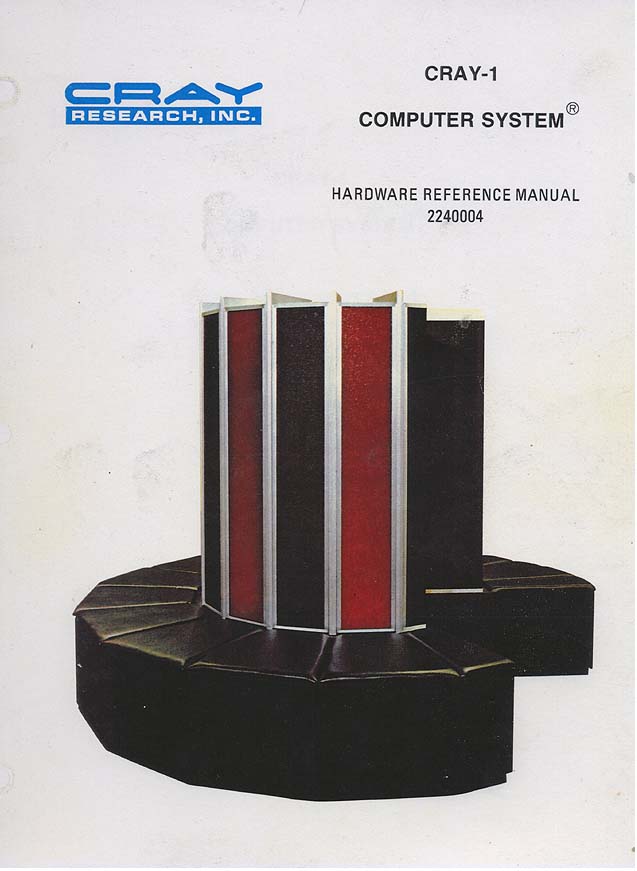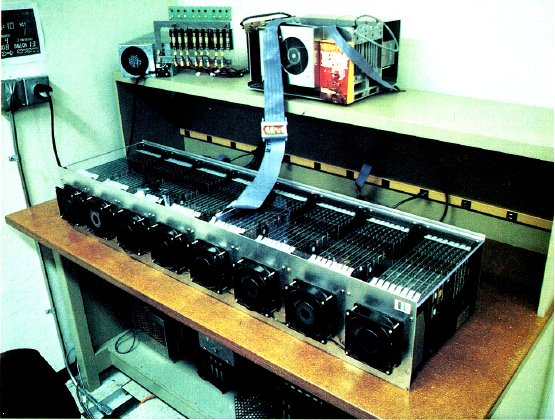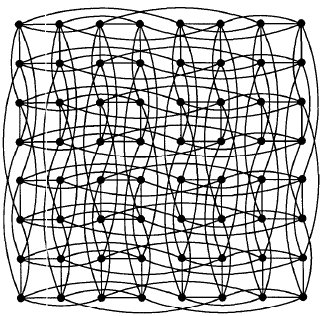
| Quantum Networking | Arithmetic | Taxonomy | Building Blocks | Compilation |

| Quantum Networking | Arithmetic | Taxonomy | Building Blocks | Compilation |
We are investigating the latter approach in a quantum context, designing a system that combines multiple quantum computational nodes into a quantum multicomputer.
In the beginning, the most common approach architects to making a more powerful computer was to make a single computer as large and fast as possible. Perhaps the epitome of that design philosophy was the Cray 1. Released in 1976, it ran at the astonishing speed of 80MFLOPS and held 8MB of SRAM, for a price tag of about US$9M.

Starting in the early 1980s, system architects explored connecting multiple computers with specialized network hardware and software, allowing all nodes to cooperatively work on a single problem. An early example of this multicomputer approach, shown below, was Caltech's Cosmic Cube.


Our quantum multicomputer will follow this latter approach. Every quantum computing technology will ultimately have an upper limit to the number of viable qubits that can be built into a single device; we want to combine multiple such devices into a system that solve larger problems than any individual device.

Working within the constraint that quantum computer nodes will have very limited capabilities, there are a number of problems we must solve:
| Aqua Home | Introduction | Research | Publications | People | Recommendations | Software |
| Home | Classes | Research | Publications | History (c.v.) | Official Profile | Personal | Contact me |